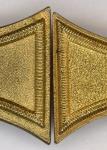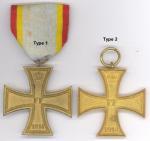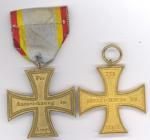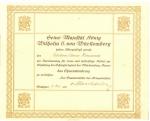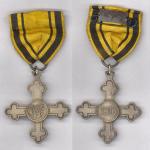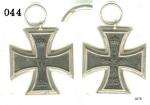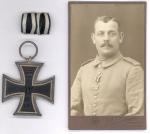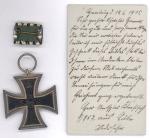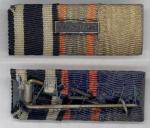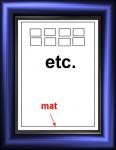-
Posts
2,016 -
Joined
-
Last visited
Content Type
Profiles
Forums
Blogs
Gallery
Events
Store
Everything posted by Tom Y
-
The basic MVK was instituted by Friedrich Franz II in 1848 and issued in all ensuing wars with a change of date. Friedrich Franz IV renewed it in 1915 with the date 1914. The earlier form, let's call it type 1, was struck early in the war. At some time later the design was changed slightly with a different crown and all capitals on the reverse. It was awarded until 1929.
-

EK 1914 EK2 maker identification?
Tom Y replied to muckaroon1960's topic in Germany: All Eras: The Iron Cross
Nothing I recognize. It may just be a less than perfect job of soldering. -
-
The Charlottenkreuz was instituted by Wilhelm II of Württemberg on the 5th of January, 1916 to honor his wife, Queen Charlotte and produced by the Royal Mint in Stuttgart. It was awarded to persons, regardless of station or gender, for service with the wounded and sick in the field or homeland or general war welfare service. The early pieces were a high grade of silver, but towards the end of the war debased to 50%.
-
I think Mitgliedskreuz (member's cross) might be a better name. From the date it appears to be a 20th anniversary of the Franco-Prussian War. Most towns had their own vets' organization apparently affiliated with a national group. More often than not you find these with the cross missing and when it's there it's usually stamped sheet metal rather than cast like yours. A nice find :cheers:
-
-
I can't get the right light angle with my scanner, but it's beyond a doubt an 8. As to the I, my feeling is that it's a ding, but thought I'd throw it out there to see if anyone has one similar.
-

JAPANESE OCC. TERR. BANKNOTES.
Tom Y replied to Mervyn Mitton's topic in Coins & Commemorative Medallions
Thanks, Mervyn, these were fairly common when I was a kid, but I've never seen the Burma overprint before. They seem to be in better condition than the ones I remember, too. -
No, definitely an 8. Looking at it through a loupe there's no mistaking it.
-
Some closeups of the Cross I posted here. I'm sure of the 8, even though it looks like a B in the scan, but the Öse could be an I, a 1, or just a ding.
-

EK 1914 The simple WW1 EK2...
Tom Y replied to Chris Boonzaier's topic in Germany: All Eras: The Iron Cross
-

Austria-Hungary Signum Laudis for generals
Tom Y replied to bovec1313's topic in Austro-Hungarian Empire
Celluloid makes the most sense. Put a match to it. If it burns it's celluloid, if it melts it's plastic. If it cracks it's porcelain :cheeky: -

Displaying Cigarette Cards
Tom Y replied to TS Allen's topic in Preservation & Restoration of Military Artifacts
I might suggest using piece of mat board cut as a very narrow mat. Or, alternatively, you could use a mat with a cutout for each card but it's a lot more work.



